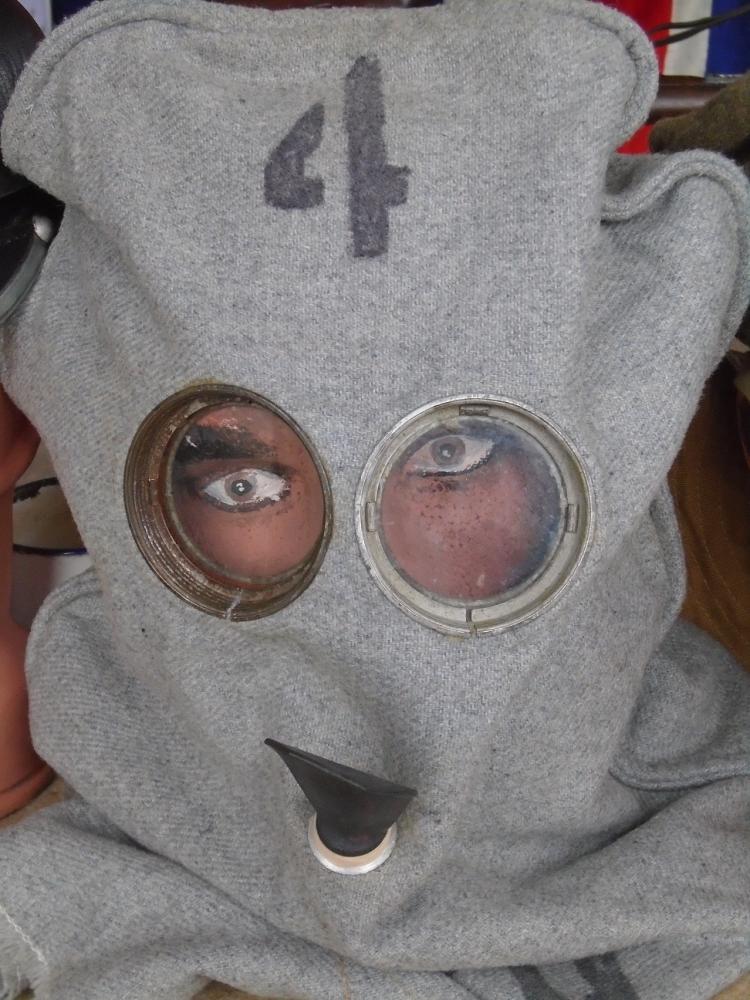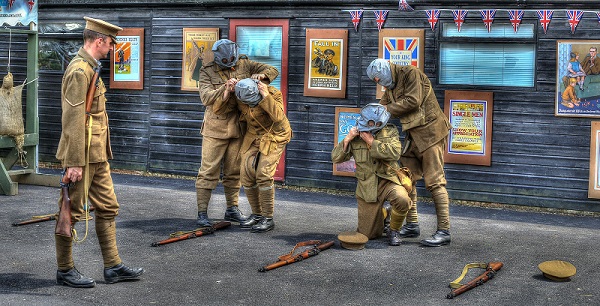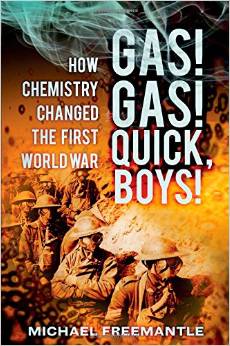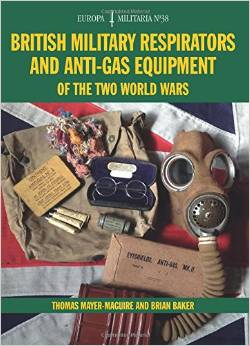Used primarily against entrenched enemies, the chemical weapons of the Great War fell into several categories. Some were used to disable an enemy such as tear gas or mustard gas, however phosgene inflicted lethal casualties. The killing capability of gas was limited with only 4% of deaths caused by gas, this was due to the development of effective masks and respirators. On 22nd April 1915 the German Army discharged chlorine gas from cylinders near Langemark, north of Ypres. This mass use of gas signalled the opening of the 2nd Battle of Ypres, and the race between effective countermeasures and ever more lethal gas. The Rifles have an extensive collection of reproduction hoods and respirators issued to the British Army in the Great War. Using the manuals, our members carry out drills using a variety of masks, smoke hoods and respirators.


















SUGGESTED READING




